Feeding beef cattle during the winter can be a challenging experience if being profitable is one of your goals. Proper nutrition is a key component for a successful cow/calf operation.
Cows go through many physiological changes during a year. The winter/early spring feeding period is one of the most critical times to provide adequate nutrition for the cow because of her needs at this time.
The feed
Feed usually accounts for the single largest input cost associated with beef cattle. The winter feeding period generally becomes the largest portion of this cost. Stored feeds such as hay normally cost producers three to five times as much as grazing a summer pasture or stockpiled feed in a paddock, when cost is calculated.
It’s critical to keep the amount of stored feed fed to an acceptable minimum so costs are kept under control, but you must still feed enough hay to meet the nutritional needs of the cow. We must maintain the cow’s dietary needs if strong healthy calves are to be born in the spring and also get cows re-bred in a timely manner to maintain acceptable calving intervals.
So, we quickly see how overfeeding becomes costly, but don’t ever forget that undernourished cows may be a disaster. Under nourished cows are ones not receiving enough nutrients from their feed.
Notice I did not say it’s cows not being fed enough hay. Cows can be under nourished even though they are eating all they can eat. Feeding the correct quantity of hay is important, but feeding the correct quality of the hay during each production stage is the key.
Quantity
We often use the figures 2.5-3 percent of a cow’s body weight as the amount of dry matter a beef animal needs per day.
So, a 1,300 pound cow would require approximately 33-39 of dry matter each day.
Don’t forget this is a dry matter calculation.
To calculate the amount of hay we must actually feed, we must account for the moisture in the hay. Most stored hay will be roughly 90 percent dry matter so we divide our 33-39 pounds by 90 percent (.90) and get an as-fed-amount of 37-43 pounds of hay per day for our 1300 pound cow.
Quality
Here’s the catch. Doing these calculations still do not assure us the proper amounts of nutrients are being fed. Remember we said cows can starve eating all they could eat. Quality of hay must be accounted to ensure the nutrients being fed are adequate.
Poor quality hay has high percentages of non-digestible (neutral detergent fiber) material in it. Because of this, a cow can not eat more than about 1.5 percent of her body weight in neutral detergent fiber material.
Poor quality forage does not pass through the rumen as quickly as high-quality forage, hence the cow is full, but still lacks the nutrients she needs to maintain productivity.
Laboratory forage analyses I’ve had done sometimes reveal that hay does not contain the nutrients I thought it might.
Feeding Factors. Many factors must be taken into consideration when feeding cows — frame size, body condition, age, time of the year, stage of gestation, types of feed, feed quality, fluctuations in air temperature, mud, rainfall and the list could go on.
Animals require energy for maintenance, growth, work, and milk or meat production. Feeds are evaluated in terms of the amount of energy and crude protein the animal can obtain from them. Providing the correct quantity and quality of feed, at the proper time, is what producers must do to maximize production, maintain cows in proper body condition, and keep costs under control.
Knowledge
Knowledge of your hay’s quality, the amount consumed, and nutrient needs for all classes of livestock in your operation is essential to make the best use of forages available. Nutritional needs for cattle of various ages, weights, and production stages are published in numerous places and easy to obtain. Accurate nutritional data of your hay lots will only be known if you have laboratory analyses done.
Whatever method one uses to determine quantities of feed fed, producers should regularly monitor body condition of all livestock. This will help verify if nutrients being fed are calculated properly, distribution among all animals is adequate, and boss cows are not keeping timid cows from eating enough forage, causing them to lose weight.
A body condition scoring chart that shows pictures and lists body condition descriptions may be found at http://ohioline.osu.edu/l292/index.html.
Additional Information. For more information about quantity and quality of nutrients cattle should be fed, contact a member of the OSU Extension Forage Team. Names and phone numbers of team members are listed on the Forage Team Web site under the Directory tab at http://forages.osu.edu/.


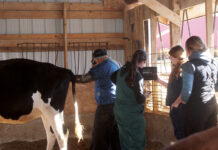

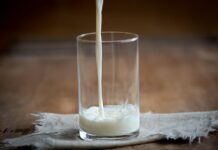
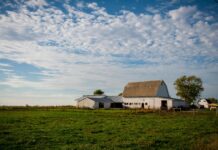
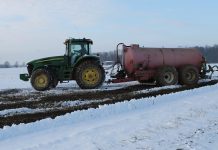
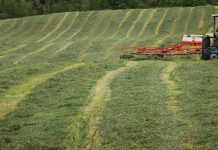
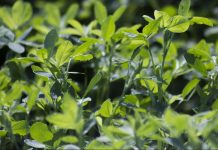




Great article but would have been better with a discussion on the nutrient requirements such as percent crude protein, total digestable nutrients on a dry matter basis required for mid-gestation, late gestation and lactation. I’ve seen this data published in another article. However, Oklahoma State University has developed a Microsoft Excel program to evaluate the adequancy of hay based on forage analysis. The first link in their fact sheet and the second link is where the program can be downloaded
http://pods.dasnr.okstate.edu/docushare/dsweb/Get/Document-2002/CR-3280web.pdf
http://www.ansi.okstate.edu/exten/cowculator/
This is very interesting. A good friend of mine did a study abroad program in Argentina and she told me that the meat, even at the fast food chains, tasted different from the US. I asked her why she thought this was and she said because of what and how they feed the cows down there.
I enjoyed reading your article but was looking for slightly different information. We have a small beef cattle herd in Erath County, Texas, and have divided our herd into four herds right now in order to raise the heifers we’re keeping and then we have two herds with different bulls. The 4th herd numbers four, and is comprised of my pet steer, his mother, and two other cows who have lost calves in the past, either in the last year or two years ago (producing a calf last year). This four member herd is on approximately 40 acres of unimproved pasture, although there are stands of little blue stem here and there, and we hay them about every other day. Still, today I noticed the steer eating briar leaves, and one of the cows eating pecan leaves. Does this indicate that they are not receiving proper nourishment from the pasture and hay? The hay is horse quality coastal just put in the barn last October. I’m sure you can already tell from the content that we do not manage our herds like most people do; i.e., shipping cows the moment they lose a calf (IF this is a cow that has produced excellent calves in the past). The ranch is 450 acres and has been in the family since the 1870s.
Any information you can offer would be appreciated. Maybe we need to buy mineral blocks or something. We already provide 24% protein tubs.
Thanks so much.
Judith
Thank you for pointing out that animals require energy for milk and meat production. This seems like a very important factor to consider when you are running a farm and own cows. Hopefully, farmers look into getting the best cattle feed for their cows.